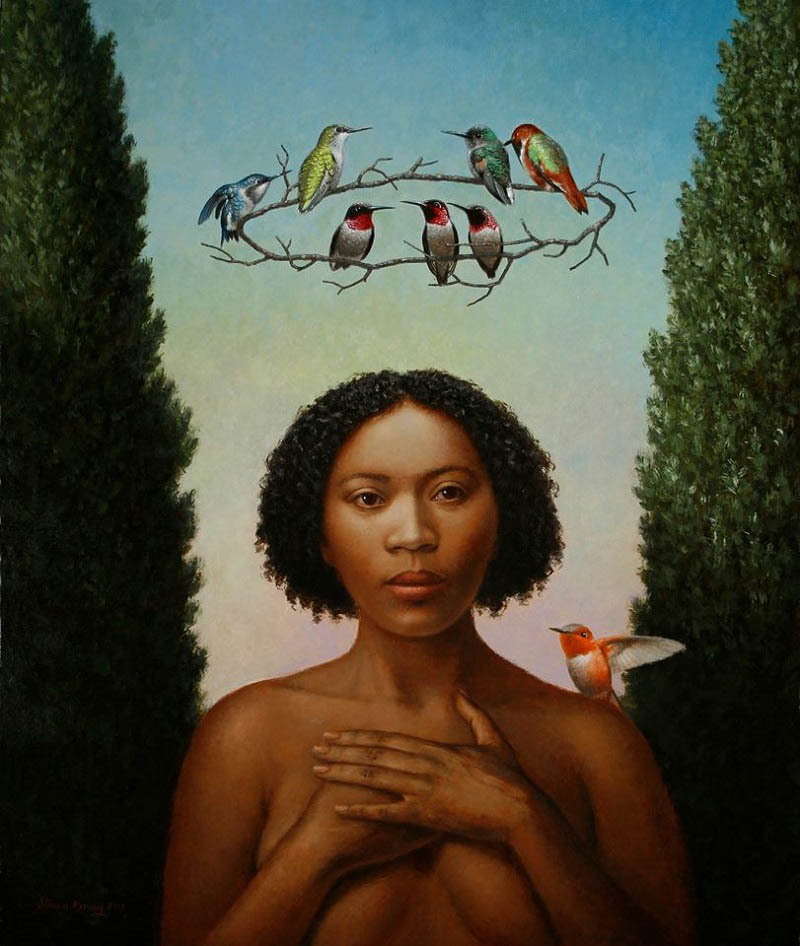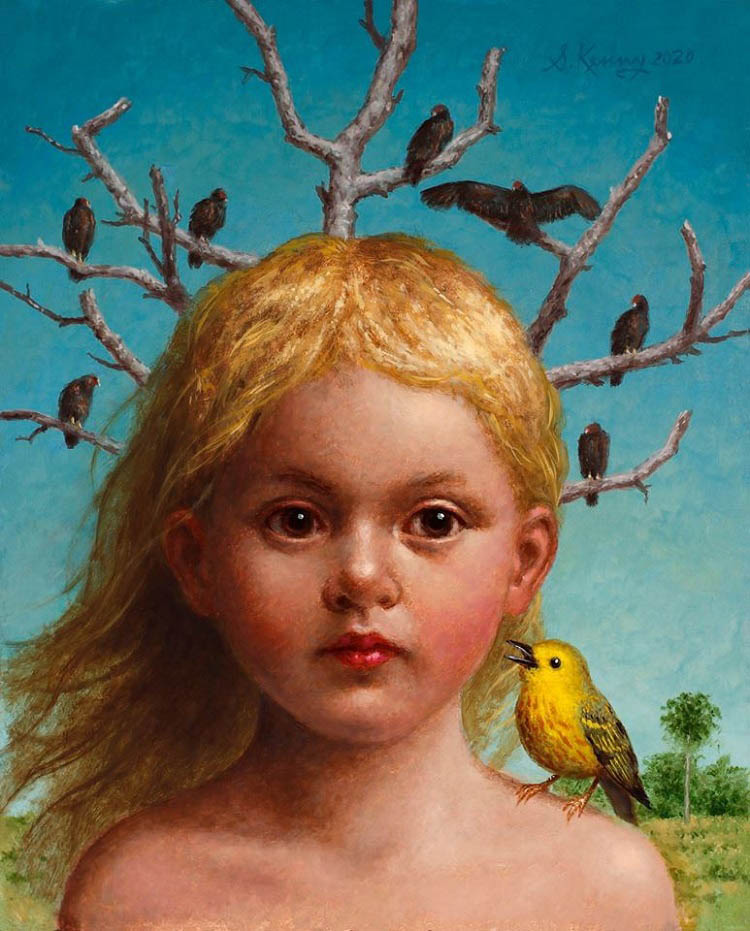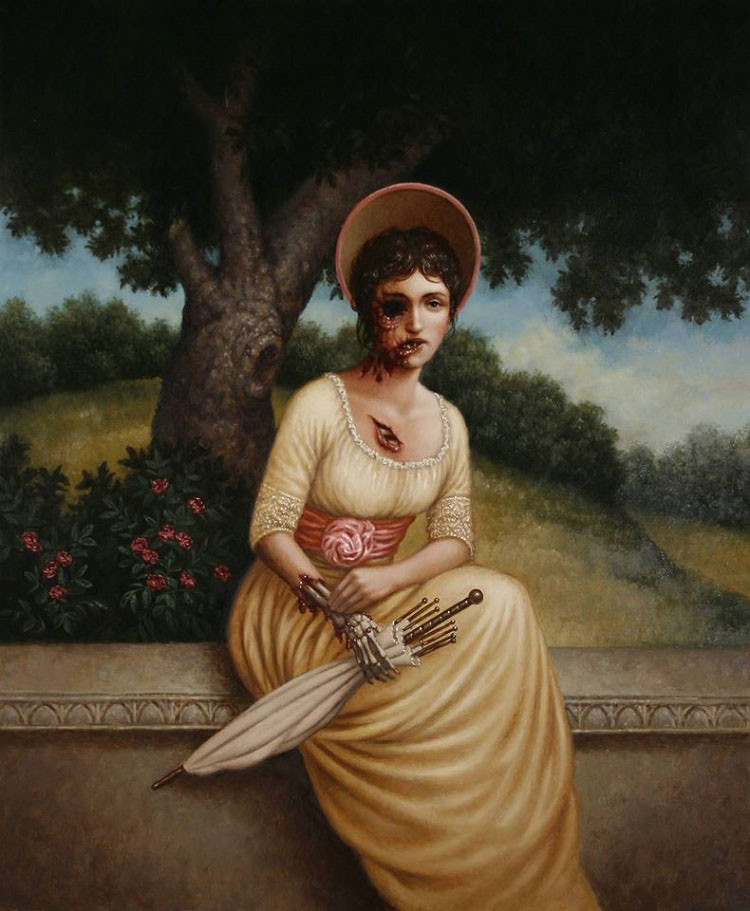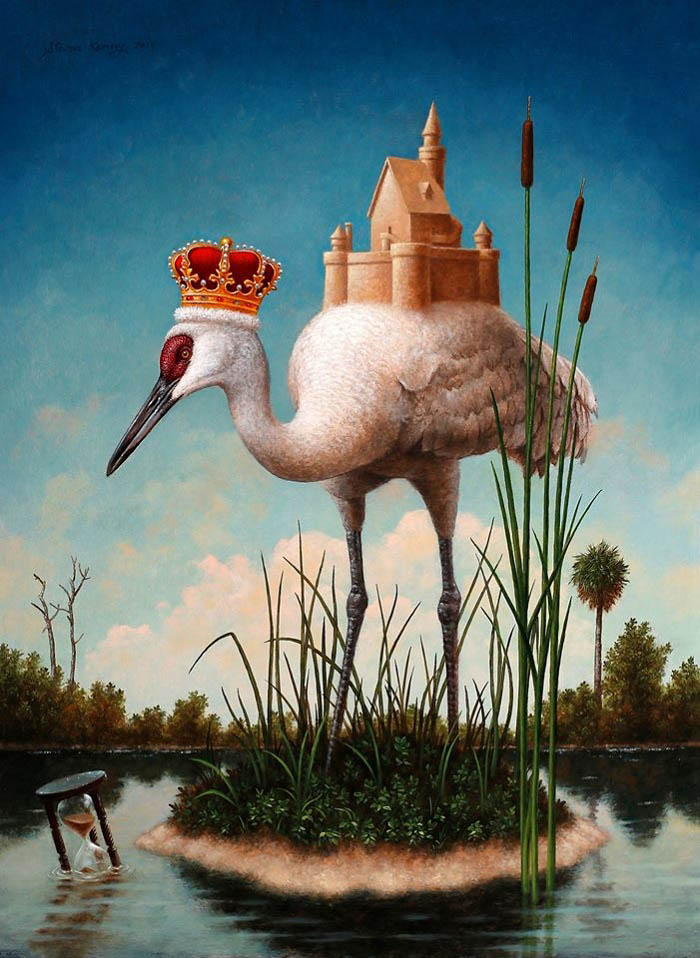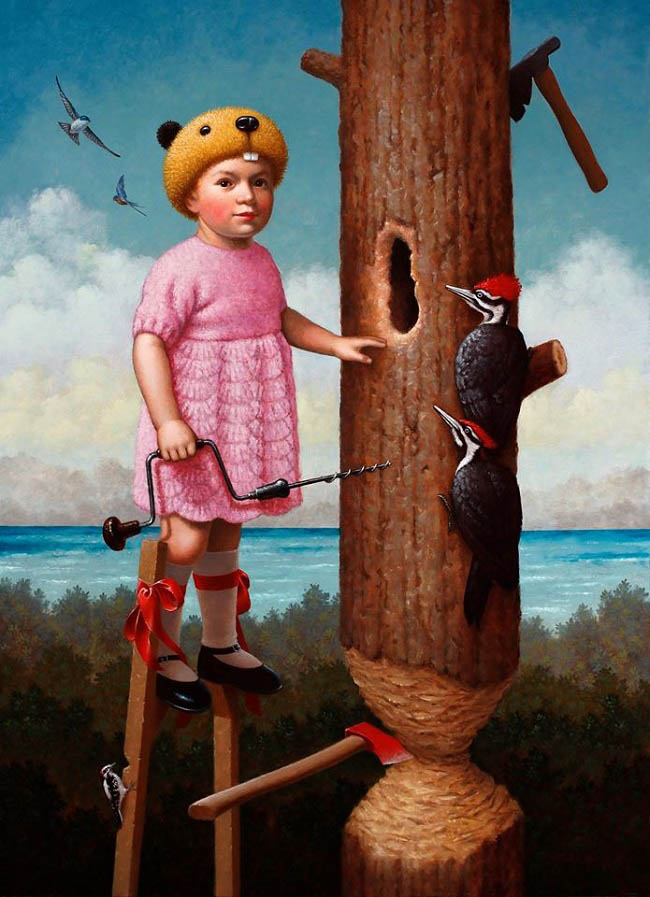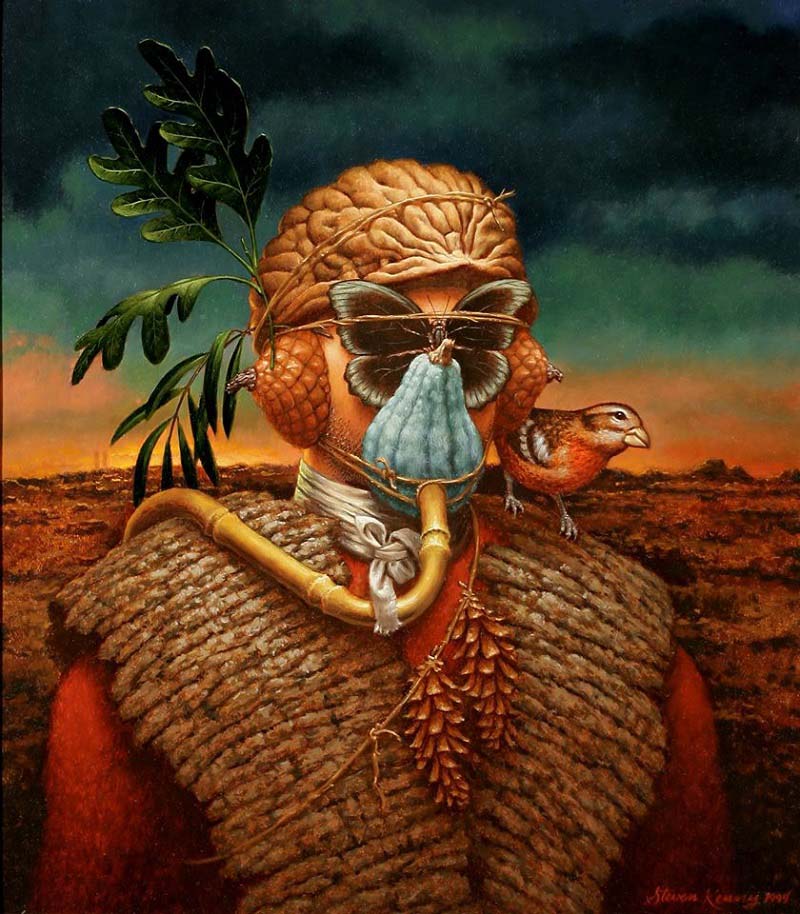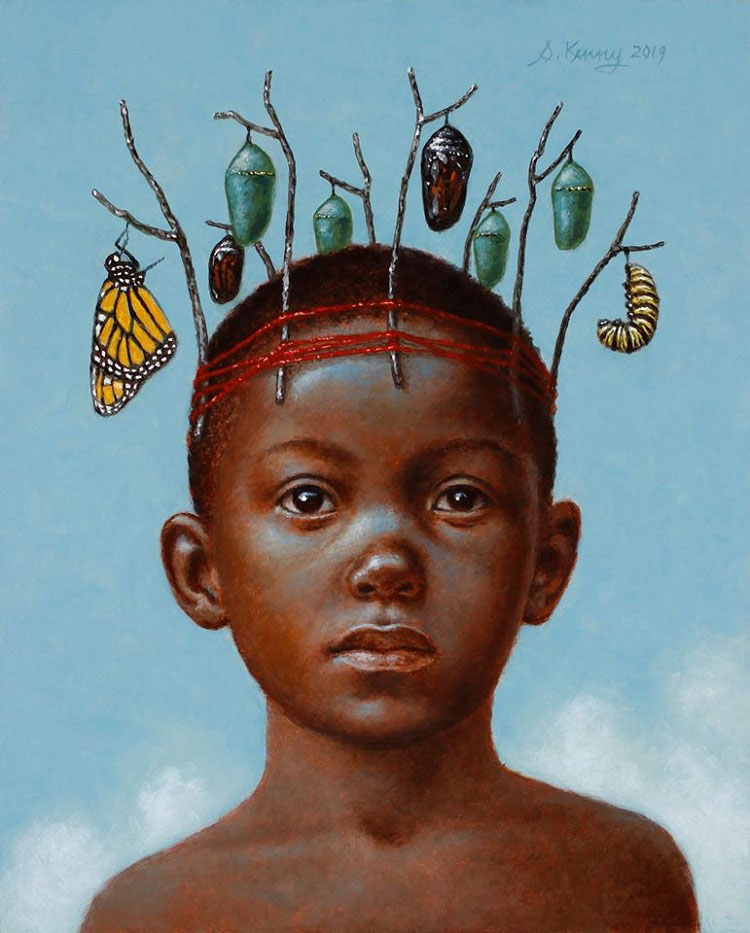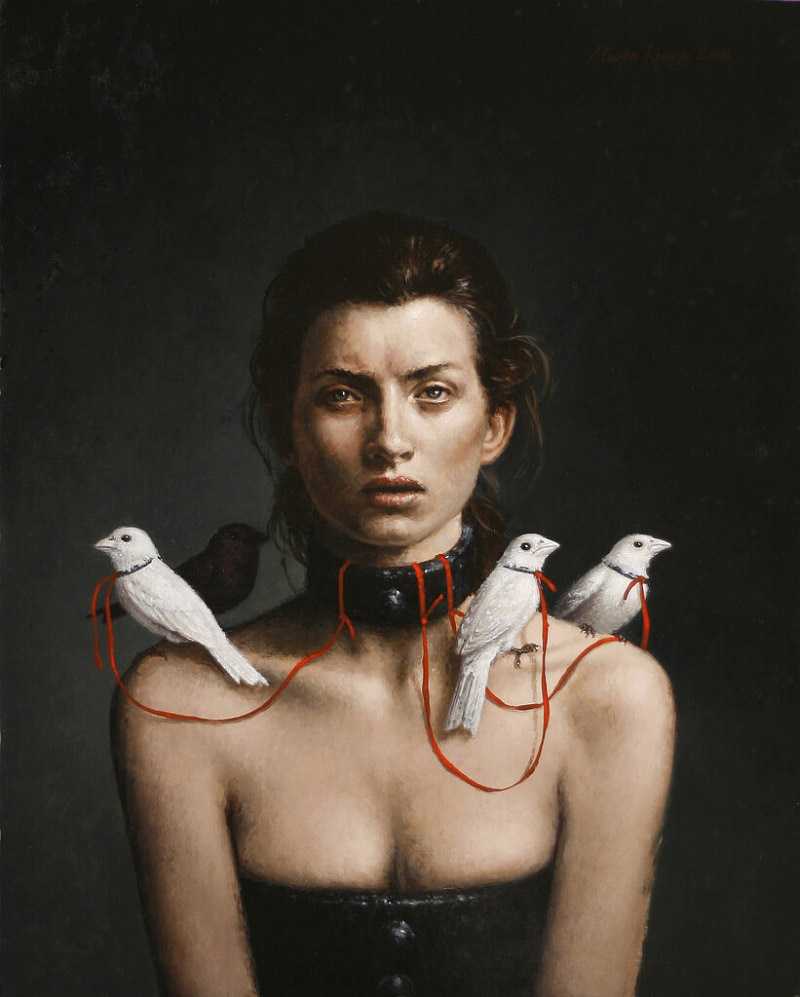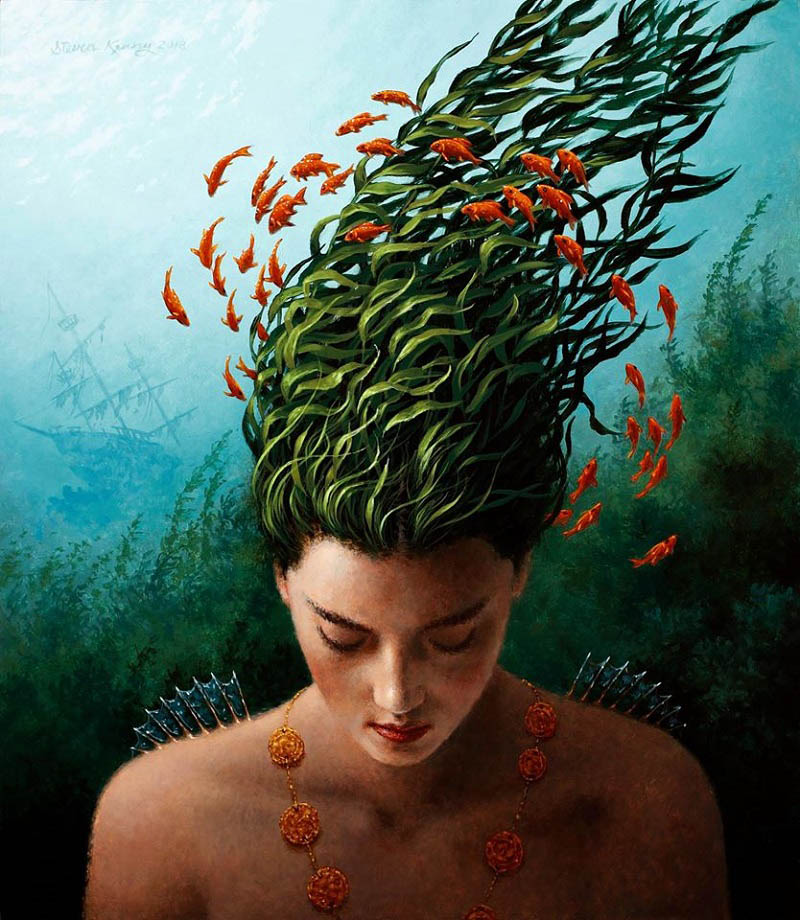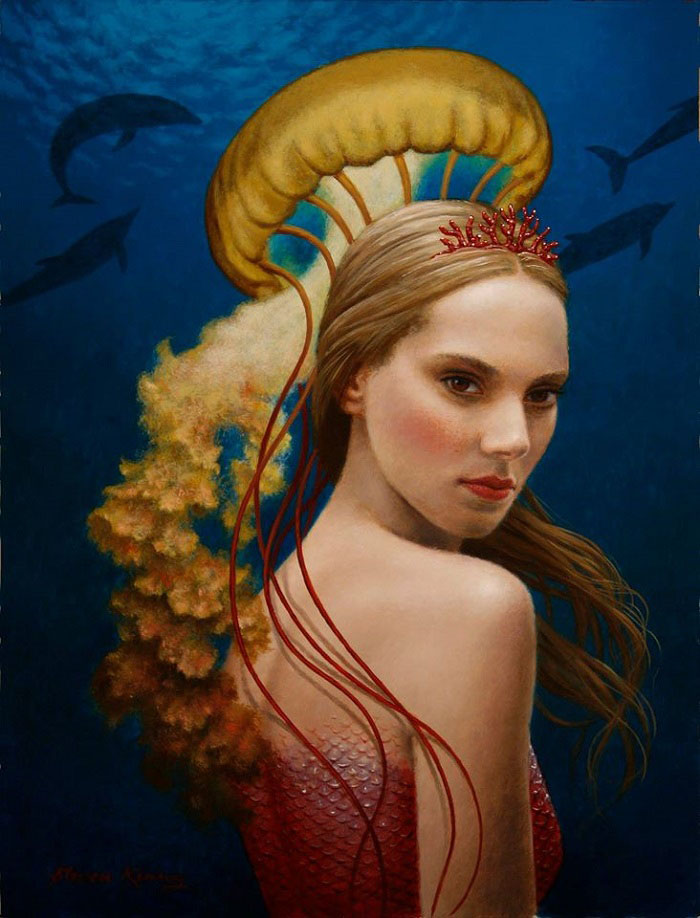Exclusive Interview with Steven Kenny, 1st Prize Winner, INPRNT Traditional Art Award, 2019 Beautiful Bizarre Art Prize
Delve into the magically surreal compositional elements of Steven Kenny’s creative visions… where anything seems possible. Let his emotive work engage your imagination and transport your artistic wanderings.
In this exclusive interview (conducted by Christopher Inwood), we learn about Steven Kenny’s motivation to enter the Beautiful Bizarre Art Prize and gain invaluable insight into his stunning painting “The Ribbons”, as he shares with us its poetic symbolism and expressive interpretations.
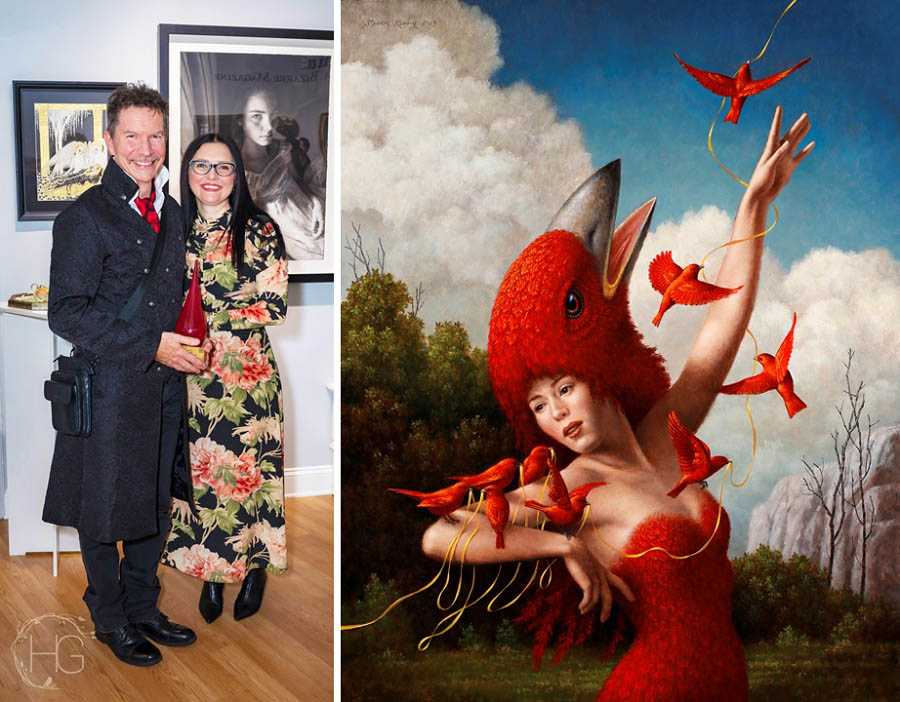
To enter the 2020 Beautiful Bizarre Art Prize in any of the four Award categories: INPRNT Traditional Art Award, Yasha Young Projects Sculpture Award, ZBrush Digital Art Award or iCanvas Photography Award, and for your chance to receive global exposure for your work + share in over US$35,000 in cash and prizes, click here.
Steven Kenny was born in Peekskill, New York in 1962. He attended the Rhode Island School of Design, receiving a Bachelor of Fine Arts degree in 1984. His final year of art school was spent studying independently in Rome. This direct exposure to European art (especially the Baroque works of the Italian, Dutch and Flemish schools) had a significant effect on his painting style. First gaining international notoriety as a freelance commercial illustrator, Steven later devoted his full attention to the fine arts. His award-winning paintings are exhibited worldwide and are in private and museum collections in the United States and Europe. Kenny’s home and studio are located in St Petersburg, FL.
Interview with Steven Kenny by Christopher Inwood

This is such beautiful piece of art; who is the figure in your painting?
The figure is based on a found photograph that caught my attention. The rest of the composition evolved around that.
How would you describe her facial expression?
Her expression is liminal, as if she is mid-way between a conscious and unconscious state, perhaps undergoing a transitional experience.
The posture is delicate, but also confined. Is there conscious positioning?
I wanted there to be an overall sense of motion. She’s moving forward while the birds simultaneously wind (or unwind) the ribbons around her.
There are six red birds twisting orange ribbon around the main figure. What type of birds are
they and do they hold certain significance? Why six? What is the meaning of the ribbon? And why are they circling around her?
The birds are based on hummingbirds but not meant to be a specific species. They were chosen because of their small size. Six were needed for compositional reasons and the number has no significance. Much of my work over the years has included references to binding or tying and has included rope, string, spider webs, and/or ribbon. In this case ribbon suited the subject best. I wanted the motion of the birds to be ambiguous as to whether the figure was being bound or unbound.
Are the little birds actually only one bird but the painting depicts them fractured in time?
The birds are meant to be generic, representing the general concept of “bird.”
Is the landscape significant? What is the year? Are they in a physical or metaphysical space? (A certain place, type of flora native to a country or just a compositional choice that ties the figure and birds together in space.)
The landscape is not meant to be identifiable as a particular place. As you said, just a compositional choice that ties the figure and birds together in space.
What type of bird is the crowned bird? Is this species held any symbolic narrative?
The crowned bird is also meant to be generic and just represent the concept of “bird.”
Why does the bird have a crown? What type of crown is it… pearls?
I’ve been producing an ongoing series of small Royal Animal paintings since 2005. Each animal or bird wears a golden twig crown with pearls and is meant to portray them as sovereign natural beings having regal status.
In Australia, we have verbal histories of ‘Fire-hawks’ that carry flaming sticking in their beaks, that start other fires. Is there a significance to the flaming twig? For instance, the symbol of doves with an olive branch is peace, but if the branch is on fire that would signify something different. What are your thoughts on this? Is the posture of the crowned bird mimicking something, calmly perched, or in motion?
The flaming stick was the last element to be added to the painting. My intention was that it might be interpreted as the spark of knowledge, insight, or inspiration.
Why is the bird tied to the head of the figure; is it to function as hat, crown, or is it anamorphic?
Many of my previous paintings depict figures with headdresses of some sort, including birds. Birds often represent freedom so the proximity to the head implies a freedom of mind, thinking, imagination, vision, etc.
Will you explain to us the significance of the single palm tree?
A winking nod to Florida where I live.
I noticed in most of your painting the clothing of the figure seems to be more like scales, feather, or skin rather than a adornment. Is this a conscious decision?
I avoid using recognizable clothing because it speaks of a particular time or place and I want my figures to be more universal. I also try to blend my figures into their environment or connect them in some visual way through their garments.
Is there a significance in colour of the dress? Its colour pairs with the crowned bird-hat; are these intentional aesthetic decisions or are you implying a link between the two?
Trying to connect the two. Originally, the bird was painted black but that just wasn’t working at all. The bird is an extension of her.
Could you tell me what you think your painting is about; the narrative, message, and overall sentiment?
I wanted the figure in the painting to represent action in the broadest sense of the word… physical, environmental, intuitive, psychological, spiritual, conscious, temporal, instinctive… all occurring simultaneously. Humans normally tune out all stimuli except for that which is the object of their focus in the moment. We like to believe that we are in command of our destiny. In truth, many factors that we have no control over influence the direction of our lives. The choices we make are the culmination of various external and internal forces. The figure in the painting is an illustration of that process.
A little about the Beautiful Bizarre Art Prize…
Why did you enter the Beautiful Bizarre Magazine Art Prize?
At first, I hesitated to enter the competition because I felt my work wasn’t in keeping with the spirit of Beautiful Bizarre Magazine. But, after seeing that there was a Traditional category, I decided my work might have a chance so I decided to give it a try.
What do you feel you have gained from this experience?
Having won the Traditional Art Prize has brought my work to an entirely new audience and, likewise, made me aware of many great artists I hadn’t known of before. The opportunity to exhibit at Haven Gallery is also a great honour which may not have happened. This interview and related social media advertising is priceless. And, finally, the generous award money and sponsor prizes are all icing on the cake.
Would you recommend it and encourage others to enter? If so, why?
I wholeheartedly encourage other artists to enter! There’s nothing to lose and so much to gain. Like me, you can’t always be aware of all the good things may come out of entering a competition like this one.

